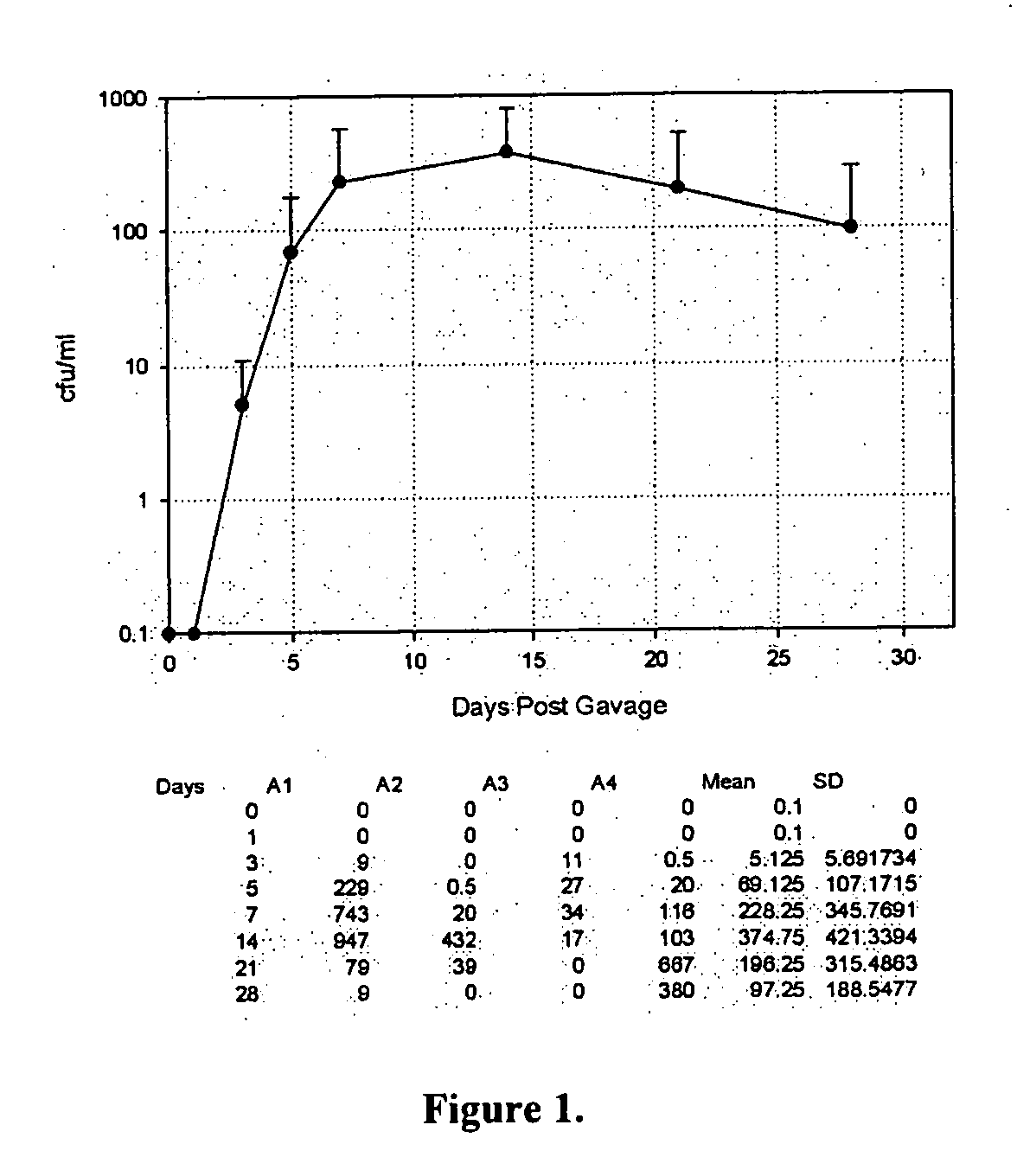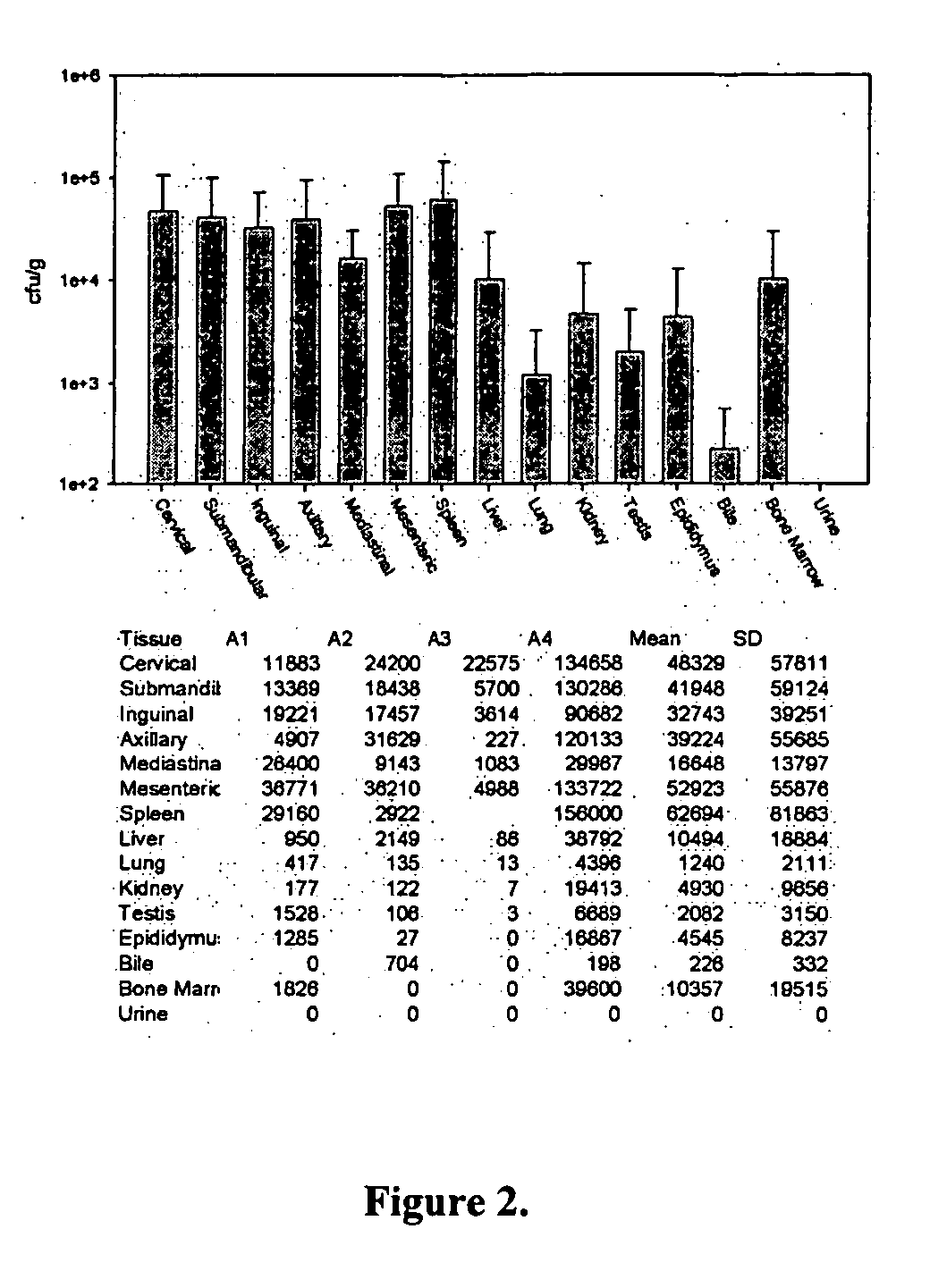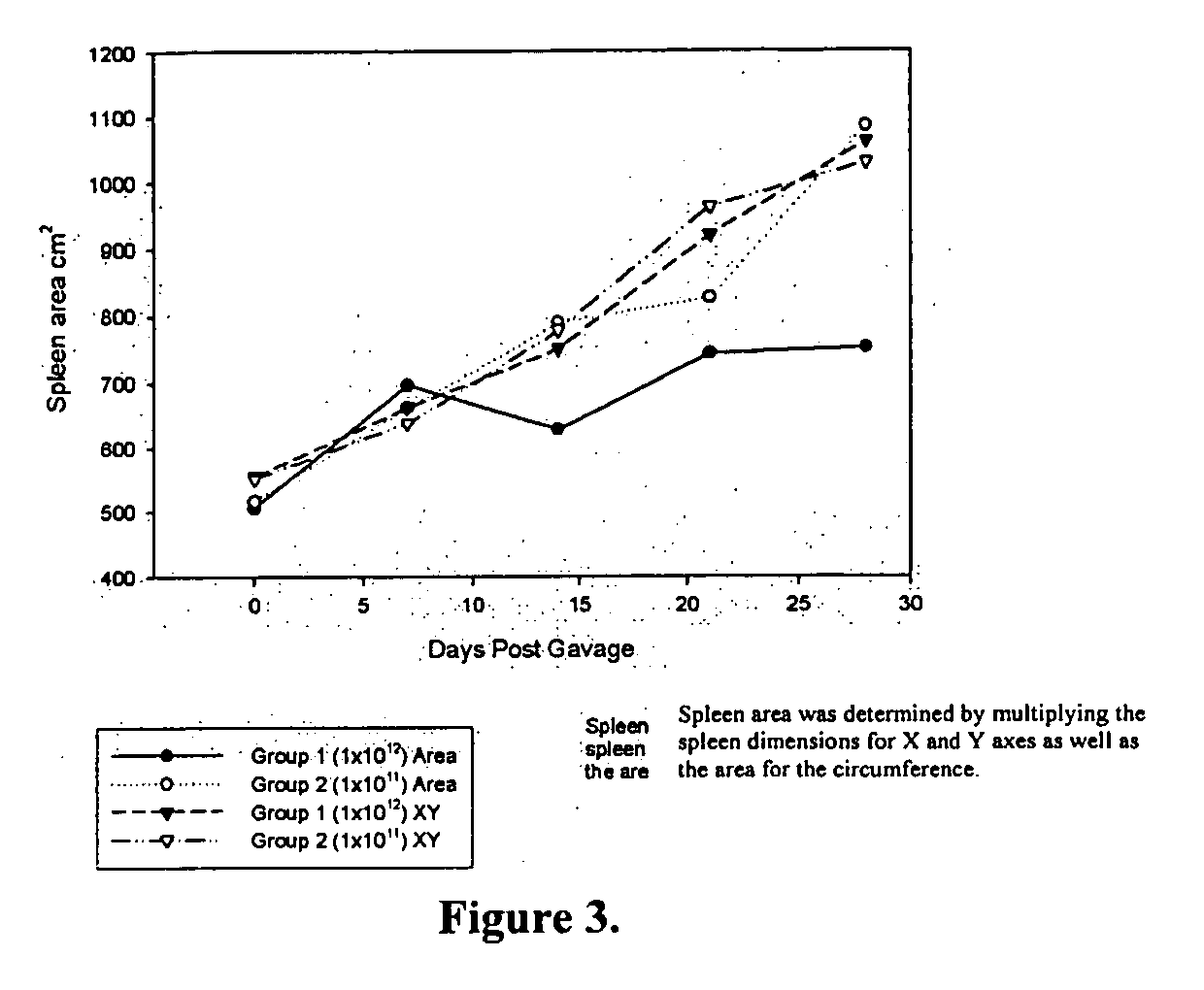Mutant strains of Brucella melitensis and immunogenic compositions
a technology of brucellosis and mutant strains, which is applied in the field of brucellosis mutant strains and immunogenic compositions, can solve the problems of affecting the survival rate of brucellosis, so as to stop the spread of brucellosis and use safe
- Summary
- Abstract
- Description
- Claims
- Application Information
AI Technical Summary
Benefits of technology
Problems solved by technology
Method used
Image
Examples
example 1
[0067] This example gives details of the genetic construction and verification of the five new strains.
[0068] Strains and growth conditions. All Brucella strains were grown in Brucella broth or on Brucella agar or M9 minimal agar. Brucella melitensis strains 16M (wild type), WR201 (ΔpurE201 (see Drazek, E., et al., Deletion of purE attenuates Brucella melitensis 16M for growth in human monocyte-derived macrophages. Infect Immun, 1995. 63(9): p. 3297-3301)), MNPH1, MNPH2 and MNPH3 were used to infect monocyte-derived macrophages (MDMs) and mice. Stocks of exponential-phase cultures frozen in 20% glycerol were thawed and used to inoculate. Broth cultures were shaken at 37° C. for 22 to 26 hours until an absorbance measurement at 600 nm of 0.4 to 0.8 by spectrophotometer (Spectronic Instruments, Rochester, N.Y.) was obtained. Bacterial cells were then harvested by centrifuge, washed in sterile 0.9% NaCl, and adjusted to the correct dilution in the same. Turbidity was used to estimate ...
example 2
Mouse Studies
[0082] This examples provides details of the construction and verification of strain MNPH1 and testing of its attenuation and efficacy in animal models.
[0083] For most studies, organisms are grown in BBL Brucella broth and shaken at 37° C., and maintained in cryovials with 0.5 ml sterile glycerol at −70° C. For an ongoing study, bacteria were prepared by fermentation in trypticase soy broth (TSB) and frozen in rubber-stoppered glass vials in 5% sucrose.
[0084] The mouse studies were designed to demonstrate that MNPH1 is highly attenuated for infection in BALB / c mice. This is achieved through examining the dissemination and persistence of infection of various organs when compared to B. melitensis 16M, the wild-type parent. In addition, the studies aimed to demonstrate the immunogenicity and efficacy of MNPH1 immunization in mice when subsequently challenged with B. melitensis 16M.
Attenuation of MNPH1 in Mice (Studies AF-95, AF-100, AF-106, AF-110, AF-113, AF-117)
[00...
example 3
Non-Human Primate Studies
Safety Studies in Rhesus Macaques (Studies WR9901, IO05-02, IO10-O2)
[0101] In experiment WR9901 (FIG. 1), the course of disease due to virulent B. melitensis 16M, the parent strain of MNPH1, was studied in four Rhesus macaques for 28 days after administration of an actual dose of 1.0×1012 CFU orally by gavage. Bacteria were prepared by scraping, washing, and resuspension from a 3-day culture on Brucella agar plates. Animals were followed clinically and serial twice-weekly blood cultures and analysis of a panel of 14 serum proteins was performed. Animals were necropsied 28 days after administration of 16M. Animals appeared severely ill by the end of the study. Three of four animals became bacteremic by Day 3 and all were bacteremic by Day 5.
[0102] Bacteremia persisted in all animals through Day 21, two of four monkeys were still bacteremic at the termination of the study on Day 28 (FIG. 2). Peak levels of bacteremia for the four animals ranged from 34 to ...
PUM
| Property | Measurement | Unit |
|---|---|---|
| Molar density | aaaaa | aaaaa |
| Volume | aaaaa | aaaaa |
| Mass | aaaaa | aaaaa |
Abstract
Description
Claims
Application Information
 Login to View More
Login to View More - R&D
- Intellectual Property
- Life Sciences
- Materials
- Tech Scout
- Unparalleled Data Quality
- Higher Quality Content
- 60% Fewer Hallucinations
Browse by: Latest US Patents, China's latest patents, Technical Efficacy Thesaurus, Application Domain, Technology Topic, Popular Technical Reports.
© 2025 PatSnap. All rights reserved.Legal|Privacy policy|Modern Slavery Act Transparency Statement|Sitemap|About US| Contact US: help@patsnap.com



